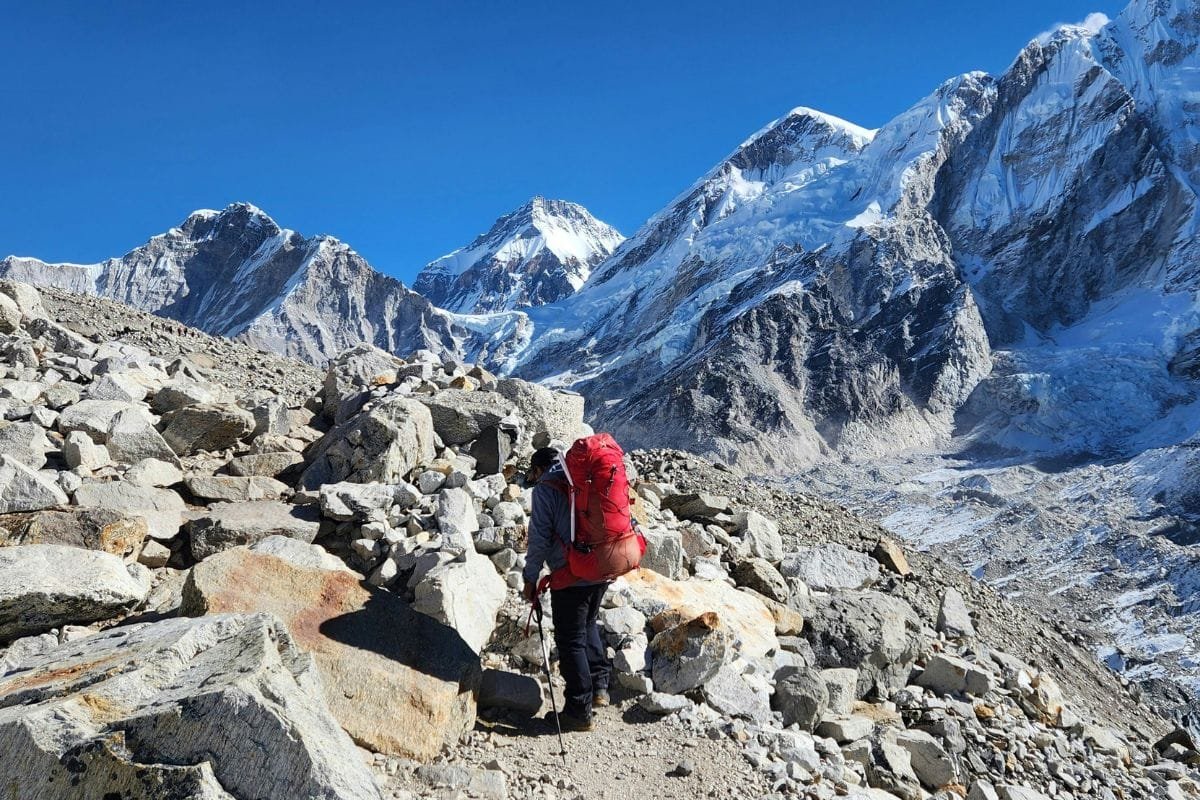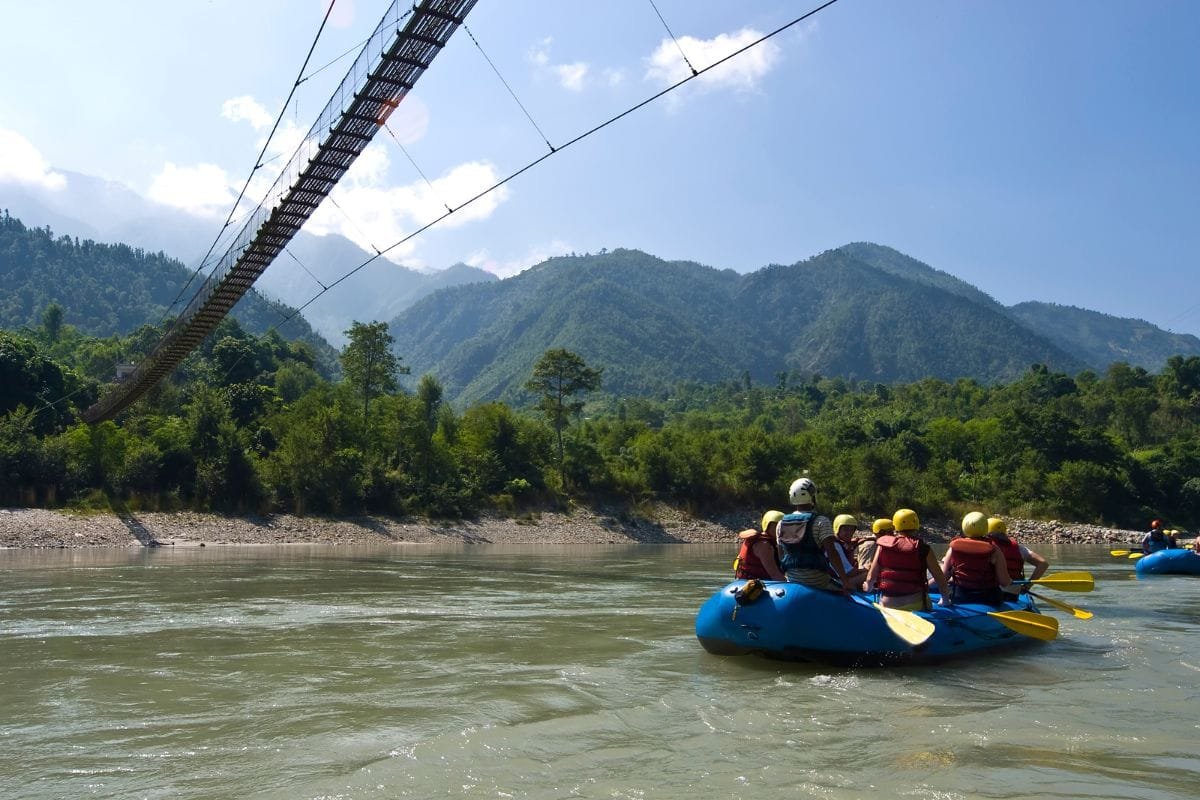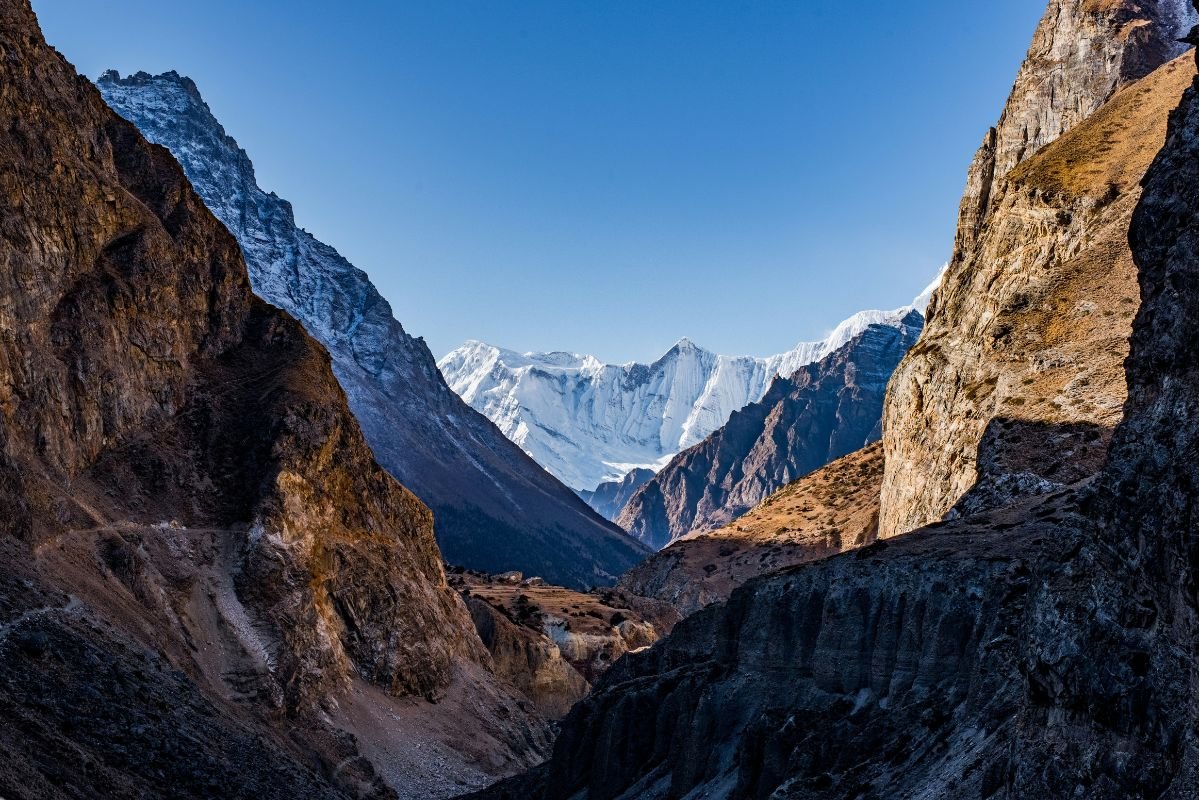Nestled just north of Kathmandu lies one of Nepal’s most scenic, culturally vibrant, and underrated trekking destinations — Langtang Valley. Surrounded by towering Himalayan peaks, ancient monasteries, and charming Tamang villages, the Langtang Valley trek offers the perfect balance of natural beauty, adventure, and cultural experience. If you’re wondering how to trek Langtang Valley, this complete guide covers everything you need to know: the detailed itinerary, permits, cost breakdown, and essential travel tips.
Why Choose Langtang Valley Trek?
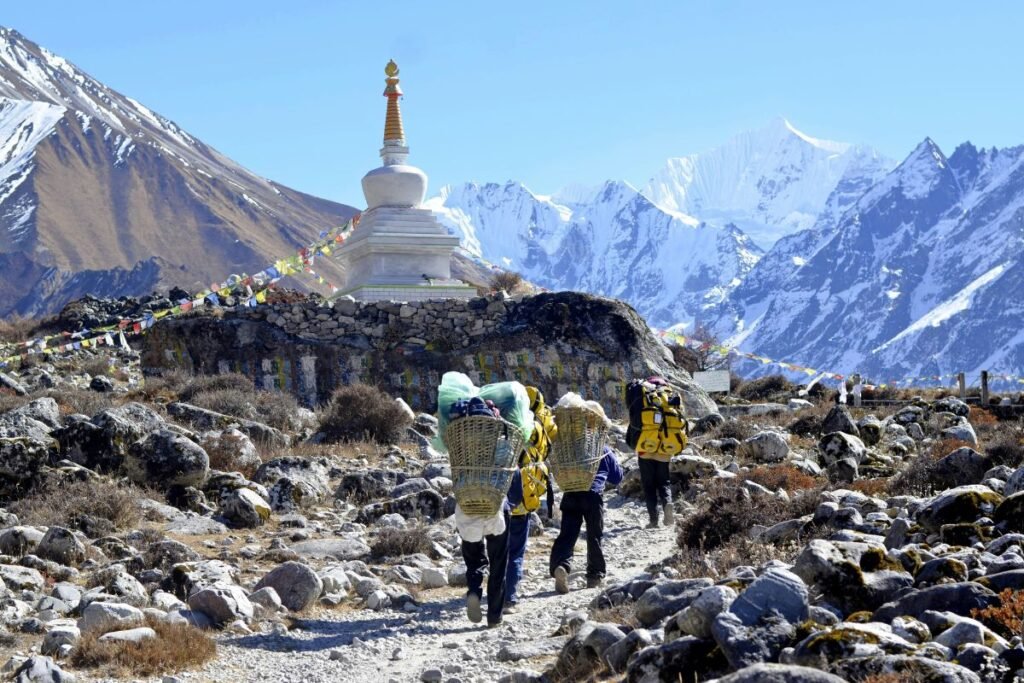
Unlike the busier Everest and Annapurna regions, Langtang Valley feels raw, peaceful, and authentic. You’ll hike through dense forests alive with wildlife, walk past glacial rivers, visit traditional stone-built villages, and wake up to stunning views of snow-capped giants like Langtang Lirung (7,234 m).
Highlights of Langtang Valley Trek:
🏔️ Close proximity to Kathmandu—only a 6–7 hour drive!
🏡 Rich cultural experience with Tamang and Tibetan-influenced villages
🌸 Blooming rhododendron forests in spring
🏖️ Breathtaking Mountain vistas without the crowds
🐾 There is a chance to spot rare wildlife, such as red pandas and Himalayan monals
Langtang Valley Trek Itinerary – Day by Day Breakdown
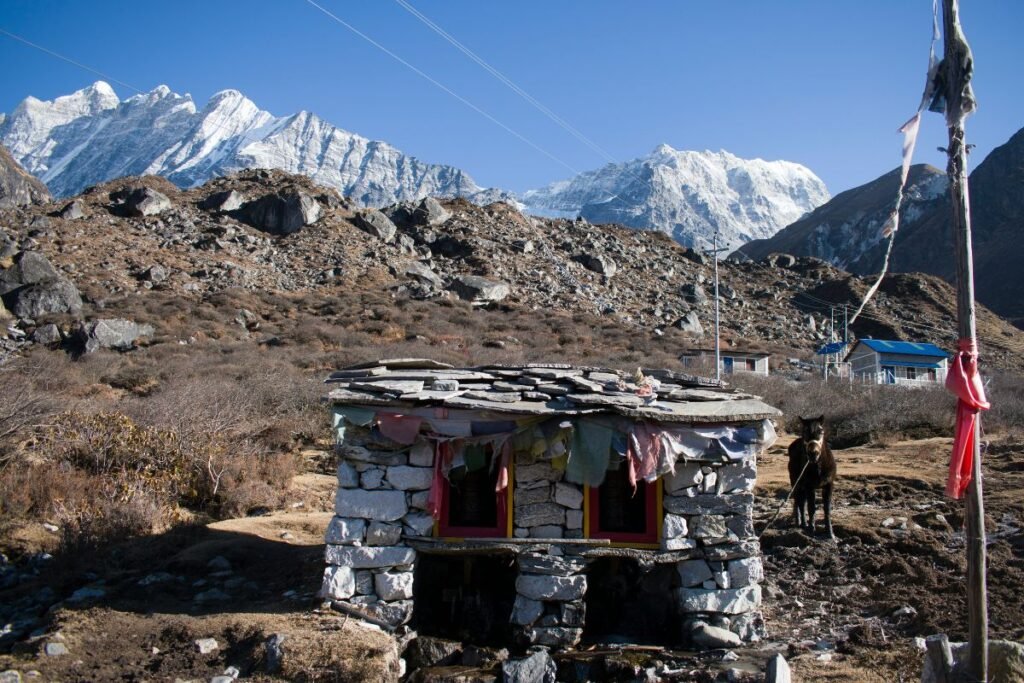
Day 1: Kathmandu (1,300m) → Syabrubesi (1,500m)
Day 2: Syabrubesi → Khangjim (2,280m)
Day 3: Khangjim → Lama Hotel (2,470m)
Day 4: Lama Hotel → Thangsyap (3,180m)
Day 5: Thangsyap → Langtang Village (3,430m)
Day 6: Langtang Village → Kyanjin Gompa (3,870m)
Day 7: Acclimatization Day – Hike to Tserko Ri (4,984m)
Day 8: Kyanjin Gompa → Lama Hotel
Day 9: Lama Hotel → Syabrubesi
Day 10: Syabrubesi → Kathmandu
Note: This itinerary is designed to be relaxed and flexible, allowing you enough time to enjoy nature, acclimatize well, and explore the cultural highlights of Langtang Valley. If you’re on a tighter schedule, you can shorten the trek to 7 or 8 days by combining some trekking days, such as heading directly from Khangjim to Lama Hotel or Kyanjin Gompa to Syabrubesi in two long trekking days. Always plan according to your pace and preference.
Langtang Valley Trek Permits (Updated for 2025)
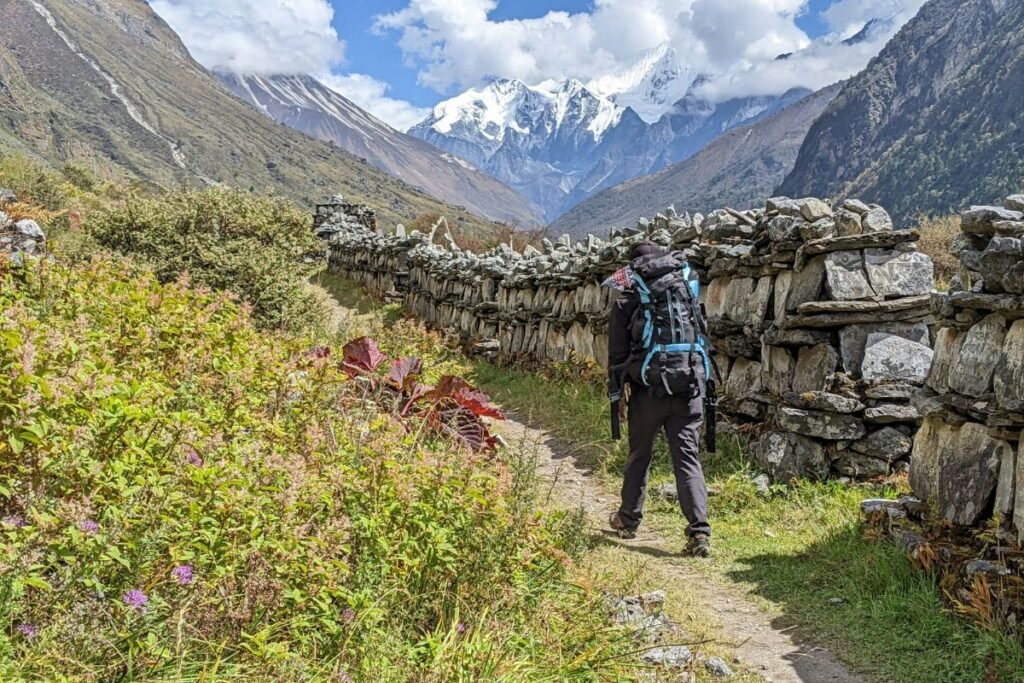
To enter Langtang National Park, you’ll need two permits:
- TIMS Card (Trekkers’ Information Management System): NPR 2,000 (~15 USD)
- Langtang National Park Entry Permit: NPR 3,000 (~22 USD)
Where to get permits:
Get both permits at the Nepal Tourism Board Office in Kathmandu or arrange through your local travel agency or guide.
Packing Essentials for Langtang Trek

✅ Trekking boots (broken-in)
✅ Layered clothing (thermal, fleece, waterproof jacket)
✅ Sleeping bag (-10°C recommended)
✅ Trekking poles (helpful for descents)
✅ Reusable water bottle + purification tablets
✅ Sunscreen, hat, sunglasses
✅ Headlamp with extra batteries
✅ Basic medicines and first aid
Trekking Gear Tip: Pack light but bring warm gear — nights can be freezing even in spring and autumn!
Best Time to Trek Langtang Valley
| Season | What to Expect |
| Spring (March-May) | Clear skies, rhododendron blooms, moderate temperatures. |
| Autumn (Sept-Nov) | Best mountain views, festive season, cool weather. |
| Winter (Dec-Feb) | Quiet trails, snow-covered villages, very cold nights. |
| Monsoon (June-Aug) | Lush greenery, occasional landslides, fewer trekkers. |
🏔️ Best Months: Mid-March to May and October to November.
Frequently Asked Questions
Is the Langtang Trek difficult?
Langtang is considered a moderate trek, suitable for beginners with decent fitness levels.
Do I need a guide?
Not mandatory, but highly recommended for navigation, safety, and cultural insight.
Are there ATMs on the trail?
No. Withdraw enough cash in Kathmandu before your trek.
Conclusion: Why Langtang Valley Should Be Your Next Trek
If you’re seeking a trek that’s less commercialized yet equally stunning, Langtang Valley delivers beyond expectations. From snow-capped peaks and vibrant culture to peaceful trails and cozy teahouses, it’s a Himalayan adventure that stays close to your heart—and closer to Kathmandu.
Start Planning Your Langtang Valley Adventure Today!
Have questions or need help arranging your Langtang trek? Contact us, and we’ll help you plan a seamless, memorable journey!
